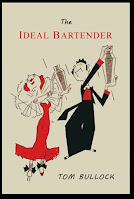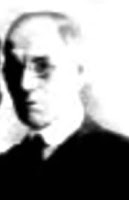Isaiah Rynders and New York’s “MacBeth” Riot
 This is Isaiah Rynders. Pay no attention to his benign — some might say “honest” — face. Rynders, who owned multiple saloons in New York City and rose through ruthless tactics to become a dominant political force in “The Big Apple,” has been identified as an instigator of the Astor Place riot of May 10, 1849. At least twenty-five persons died in that melee, occasioned by a production of Shakespeare’s tragedy, “MacBeth.” Many believe Rynders bears the blame.
This is Isaiah Rynders. Pay no attention to his benign — some might say “honest” — face. Rynders, who owned multiple saloons in New York City and rose through ruthless tactics to become a dominant political force in “The Big Apple,” has been identified as an instigator of the Astor Place riot of May 10, 1849. At least twenty-five persons died in that melee, occasioned by a production of Shakespeare’s tragedy, “MacBeth.” Many believe Rynders bears the blame.
Isaiah was born in September 1904 in Waterford, New York, a small upstate town on the west bank of the Hudson River. His father, a farmer, was of German heritage; his mother Protestant Irish. Although Rynders later would identify as a farmer, his earliest instincts were to embrace a wilder side of life. We first find him as a youth fetched up on the Mississippi as a riverboat gambler, handy with a blade and accused of killing an opponent in a knife fight at Natchez.
Perhaps escaping the consequences, Ryners returned to New York State. His sojourn on the Mississippi had taught him something of water craft and he began operating a sloop called the H. M. Whitney, shown above, carrying merchandise up the Hudson River. That occupation brought him the title, Captain, that would be his for a lifetime. He soon abandoned the Hudson to become an enthusiastic supporter of New York’s Tammany Hall, where he established himself as one of the most politically skilled organizers in the city.
 The money to fuel his empire of street gangs was Rynder’s ownership of a network of saloons and gambling parlors that supported his “political club” and generated revenue for the notoriously corrupt Tammany Hall. Rynders originally operated from a tavern called Sweeney’s House of Refreshment on Ann Street in lower Manhattan before founding in 1843 a saloon headquarters known as the Empire Club at Park Row, the area shown here.
The money to fuel his empire of street gangs was Rynder’s ownership of a network of saloons and gambling parlors that supported his “political club” and generated revenue for the notoriously corrupt Tammany Hall. Rynders originally operated from a tavern called Sweeney’s House of Refreshment on Ann Street in lower Manhattan before founding in 1843 a saloon headquarters known as the Empire Club at Park Row, the area shown here.
Having gained a reputation for “rough house” intimidation, Rynders was careful to maintain a more civilized veneer. He was known to be an eloquent speaker with an educated tongue who often injected lines by memory from Shakespeare’s plays in his orations. Rynder’s also took a personal interest in a rivalry between two actors known for their stage portrayals as MacBeth in Shakespeare’s tragedy. The rival thespians were the English actor the American leading man, Edwin Forrest, left, and the English actor William Charles McReady.
As one scholar has set the scene: “Their rivalry had been simmering for several years. Both were international stars, both had toured to each other’s countries. Forrest, in 1845, had hissed Macready in Edinburgh. Macready was not too interested in engaging in this rivalry and was trying to avoid it, but Forrest wanted to press his point. So when Macready had his own tour to New York in 1849, Forrest’s followers decided to avenge their hero….”
 No one was more partisan against the Englishman than Isaiah Rynders. The Macready performance was to be held at the Astor Place Opera House, an opulent venue shown here. The opera house had already elicited the enmity of the Tammany boss and his followers for its elitist nature. Built two years earlier, the opera house had a dress code aimed at wealthy New Yorkers, charged high prices for admission, and made it evident that common folk should stay away.
No one was more partisan against the Englishman than Isaiah Rynders. The Macready performance was to be held at the Astor Place Opera House, an opulent venue shown here. The opera house had already elicited the enmity of the Tammany boss and his followers for its elitist nature. Built two years earlier, the opera house had a dress code aimed at wealthy New Yorkers, charged high prices for admission, and made it evident that common folk should stay away.
The rivalry between two actors took on social and political significance. For recently arrived Irish immigrants trying to survive on the lowest rungs of New York society and carrying personal grudges against the English, Macready came to represent everything hated about the overclasses. To Macready’s fans, the actor represented the glamour of British society in contrast to the ignorant and impoverished immigrants embracing Forrest.
On May 7, 1849, said to have been orchestrated by Rynders, Forrest supporters disrupted a performance of “Macbeth” at the Opera House, pelting the stage with wilted vegetables and rotten eggs. Scorned and embarrassed, Macready vowed never again to perform in New York and packed his bags to head back to London. Prominent New Yorkers, including Author Washington Irving, convinced the British actor to stay for one final performance three days later. He agreed. The word got around to Tammany Hall where Rynders was waiting.
Apparently angered that his earlier efforts had failed, the saloonkeeper is said to have mobilized a mob of New York gang members and Tammany Hall regulars supporting Forrest. They gathered in strength outside the detested Astor Place Opera House in a riotous mood. A police cordon around the building prevented them from entering. As Macready performed his “MacBeth” undisturbed inside, the boiling witches’ cauldron symbolized the sense of danger in the air. After taking a quick final bow, Macready disguised himself and made a hasty exit through the back door of the theatre. He never again performed on American soil.
As shown above, outside the Astor Place Opera House, tensions were mounting. The crowds of demonstrators had grown larger and were pushing hard against the police cordon. Protestors pulled cobblestones from the street, pelting the police officers while shouting threats to burn the theater to the ground. As it got dark and officials were making no headway with the rioters, they called for military backup. Already “standing in the wings” at a nearby stable, members of the state militia marched from Washington Square, ordered to disburse the rioters from around the opera house. That meant guns.
One account: “Anger turned to panic as thousands pushed and shoved, pulling in and trampling innocent bystanders in their path. By the time the crowd finally dispersed, at least twenty-five people had been shot and killed, some from stray bullets that hit them inside their homes.” Watching events unfold from a safe location even a hardened Rynders must have been shaken by the outcome. His reaction to the carnage, however, has gone unrecorded.
Whatever involvement of the saloonkeeper cum political boss had in the Astor Place riots, the disaster apparently inflicted no permanent damage on his ascendancy. Rynders was involved in the successful presidential elections of Franklin Pierce and James Buchanan in 1852 and 1856 respectively, and in 1857 was appointed by Buchanan as U.S. Marshal for the Southern District of New York. In the 1860 census, his occupation was listed as “U.S. Marshal.”
Nor did Rynder’s roughneck reputation prevent him from hobnobbing with New York City gentry or at 50 years old marrying one of The Big Apple’s richest heiresses, Phoebe Shotwell, only surviving child of real estate mogul and wealthy importer of tea and spices, John Shotwell. Through her mother the 20-year-old bride was a direct descendant of English poet Alfred Lord Byron. Possibly to escape unwanted publicity in New York, the couple married in Washington , D.C. There would be no children.
As a U.S. Marshal, Rynders found himself, possibly for the first time in his life, expected to enforce, not flaunt the law. Now he was directed to arrest people for offenses he himself once had committed. Things came to a head during the so-called “Dead Rabbits Riot” of 1857 while he was trying to persuade the warring gangs to cease fighting. Rynders was attacked and pelted with rocks. His reputation as a political strongman in tatters, he was replaced as Tammany boss of the Sixth Ward.
By 1870, Rynders and Phoebe had left New York City and were living in Bergen, New Jersey, where they were running a 100 acre farm raising race horses. According to the federal census that year, their eclectic household of nine included two young women, likely friends of Phoebe; an Irish female domestic servant; three male farm laborers; and a young man identified as a carpenter. Rynder’s net worth was listed at $32,000, equivalent to $714,000 today. In the 1880 census, now 75, he was still running the horse farm, assisted by a nephew named Sam Smith. The household now had four live-in employees, three of them men.

Rynders, age 81, died a little after midnight on January 13,1885. He had gone out for an evening stroll and shortly after was stricken on the street. Brought home unconscious by passersby, he died at home. Newspapers across America carried Rynders’ obituary, one commenting: “There are hundreds of men now living who recall…when this one man seemed absolutely to dictate the vote of New York.” The “MacBeth Riot” went unmentioned.
Note: I first was brought to this story of the New York City saloonkeeper and political boss by the book, “American Walks into a Bar: A Spirited History of Taverns, Saloons, Speakeasies and Grog Shops” by Christine Sismondo, Oxford University Press, 2011. With further research I found a considerable amount of information online about Isaiah Rynders and his reported role in the New York “Macbeth” riot.

























































.jpg-%20L.jpg)






























































